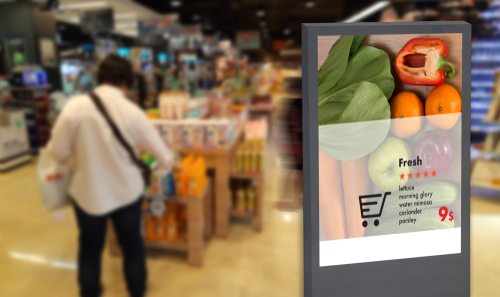Trends that give us a glimpse into the future of DOOH
By Alex Mardikian
Digital out of home (DOOH) advertising has grown impressively over the last 12 months. Yet, there is substantial room for growth.
Out of home advertising will continue its march towards adopting a more and more digital persona. Digital displays are common at community spaces such as bus stops, train stations, railway platforms, airports, theaters, malls, etc. These are beginning to now appear at smaller and more personal spaces such as mobile connection kiosks. As a result, OOH will be able to collect data more accurately and offer personal experiences based on more accurate targeting.
OOH will integrate with digital media and advertisers will be able to buy and sell ads across platforms that will include OOH. DOOH will ensure that outdoor advertising does not operate in a silo but is part of a holistic solution to marketing that covers all possible avenues where a message can be placed.
Digital signages on digital street furniture will interact with mobile GPRS systems to locate an individual’s presence and display appropriate messages. This way, queries made on apps or search can be used to direct traffic towards stores. This will allow retailers to present an in-store experience that is synchronized with a customer’s needs as assessed through GDPR-compliant beacon and mobile detection technology.
In the coming months, the digital aspect to out of home advertising will continue to grow and brands will have many more opportunities to engage with their customers. Thought will have to go into the ever-present issues of how to target an audience to collect data while maintaining trust and transparency. Already there’s work being done on automated data gathering and workflows. OOH will offer advertisers the choice of mass targeting and narrowing down targets to provide bespoke and customized messages.
Automation in DOOH will enable media buyers to plan broader strategies that include targeting the same buyer online as well as offline. Data collection and insight generation will improve. DOOH implementation will become even more creative and the ROI for companies will increase. The technology will be adopted by businesses across the spectrum. Presently, retailers and luxury brands are the largest users of DOOH. Cross-medium application of DOOH will require standardized measuring techniques and methodologies. This will enable businesses to view static and digital out of home advertising as a part of the larger marketing mix and not something that is viewed in isolation.
DOOH offers marketers to reach out to consumers in places where one’s attention can be engaged. While the ability to meld both the real and online worlds is the USP here, marketers will prefer to invest in DOOH in a manner that has some kind of precedent with respect to returns. Metrics for a campaign will gain importance as automation becomes the norm. DOOH inventory will eventually be purchased along with digital ads and not in separate silos.
The biggest takeaway in terms of trends is that DOOH marketers will work together and in a synchronized manner with other indoor and outdoor marketing channels. The location-based advertising market will evolve and give advertisers the ability to target masses as well as individuals with appropriate messaging.

